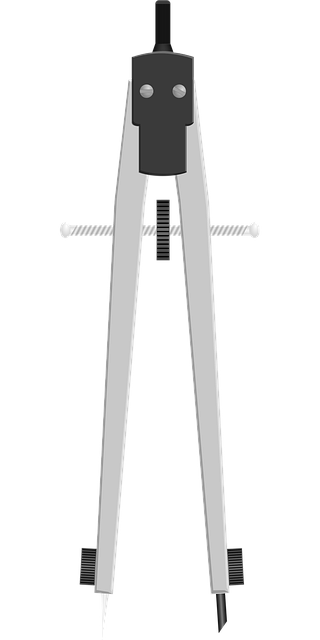Civil engineering CAD drafting revolutionizes structural framing across materials like wood, steel, and concrete. 2D & 3D models ensure precision, optimize material usage, enhance safety, streamline design, and enable cost-effective construction for diverse building needs. Hybrid framing plans leverage unique material strengths through advanced digital modeling for maximum efficiency and sustainability.
“Explore the art of structural framing across diverse materials with our comprehensive guide. From the classic wood framing techniques used in basic civil engineering to modern steel structures enhanced by CAD drafting, we delve into designs ensuring strength and durability. Concrete construction methods focusing on structural integrity are also covered.
Furthermore, we dissect the rising popularity of hybrid framing plans that integrate these materials for optimal efficiency in today’s building industry.”
Wood Framing: Basic Civil Engineering Techniques
Wood framing is a fundamental aspect of structural design, often employed in residential and light commercial buildings. Basic civil engineering techniques involve creating floor plans, wall sections, and detail drawings using civil engineering CAD drafting software. This digital approach ensures precision and facilitates quick modifications, reflecting the dynamic nature of architectural projects.
By utilizing 2D and 3D CAD models, engineers can visualize and analyze structural elements, ensuring they meet building codes and safety standards. The integration of wood framing within these digital frameworks allows for efficient material estimation, precise cutting instructions, and optimized design solutions, making it a versatile and cost-effective option in the realm of civil engineering.
Steel Structures: CAD Drafting for Strength and Durability
In the realm of structural framing, steel structures stand tall due to their exceptional strength and durability, often complemented by the precision of civil engineering CAD drafting. This digital design process plays a pivotal role in ensuring that every steel component is meticulously engineered to withstand various environmental factors and load conditions. By employing advanced CAD software, engineers can create detailed 3D models, allowing for comprehensive analysis and visualization.
Such drafting enables thorough examination of each joint, beam, and column interaction, thereby optimizing the overall structural integrity. This meticulous approach not only enhances safety but also facilitates cost-effective construction. With accurate measurements and specifications generated by CAD, steel fabrication processes are streamlined, minimizing wastage and ensuring efficient project completion.
Concrete Design: Structural Integrity in Construction
Concrete, a versatile and durable material, plays a pivotal role in construction, especially when it comes to structural integrity. In civil engineering projects, concrete design is an art and science that involves precise calculations and innovative techniques to ensure buildings, bridges, and infrastructure withstand various loads and environmental conditions. Professionals in the field rely on detailed civil engineering CAD drafting to translate complex designs into tangible structures.
Through advanced computer-aided design (CAD) software, engineers can model and simulate concrete framing plans, ensuring optimal strength-to-weight ratios. This digital approach allows for intricate detailing, precise measurements, and efficient material allocation, ultimately contributing to the overall stability and longevity of wood, steel, or concrete structures.
Integrating Materials: Hybrid Framing Plans for Optimal Efficiency
In modern construction, integrating diverse materials is a key strategy for achieving optimal structural efficiency. Hybrid framing plans, which combine wood, steel, and concrete, offer a flexible and robust solution that caters to various project needs. Civil engineering professionals leverage CAD drafting software to design these complex systems, enabling precise material placement and optimized load distribution.
By merging the strengths of each material—wood’s cost-effectiveness and ease of assembly, steel’s high strength-to-weight ratio, and concrete’s compressive strength—hybrid framing plans maximize structural integrity while minimizing resource waste. This integrated approach not only enhances building performance but also promotes sustainability by reducing overall environmental impact in the construction sector.
In exploring structural framing plans, this article has highlighted the diverse approaches to construction using wood, steel, and concrete. From basic civil engineering techniques in wood framing to the advanced CAD drafting for steel structures, each material offers unique advantages for achieving both strength and durability. Concrete design emphasizes structural integrity, while integrating materials through hybrid framing plans optimizes efficiency. For professionals in the field, understanding these methods is key to navigating modern construction, ensuring safe, sustainable, and efficient buildings. Utilizing civil engineering principles and CAD drafting skills allows engineers to create innovative designs that stand the test of time.
